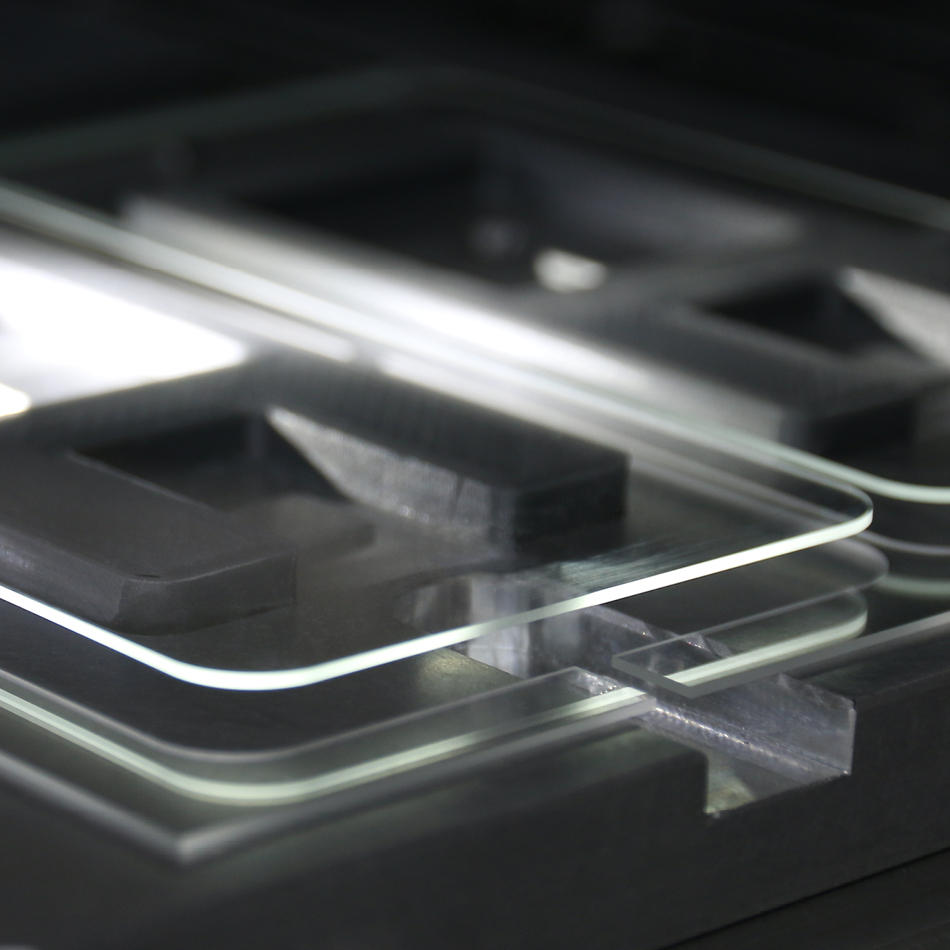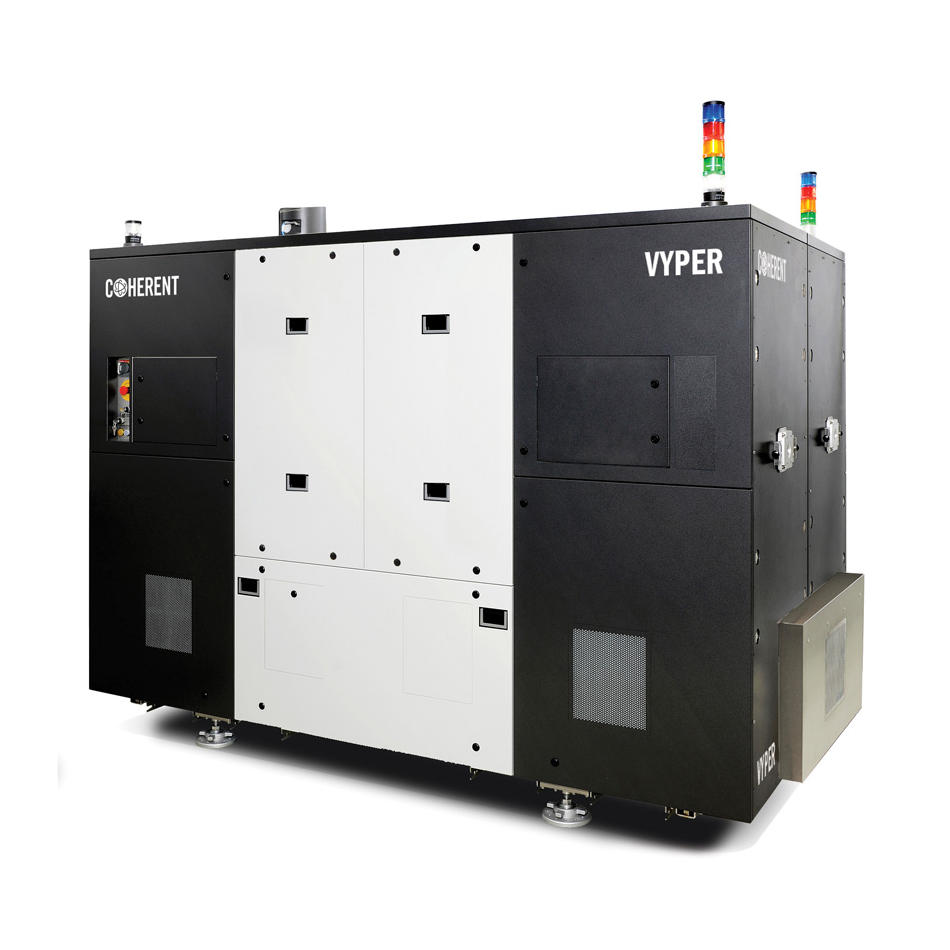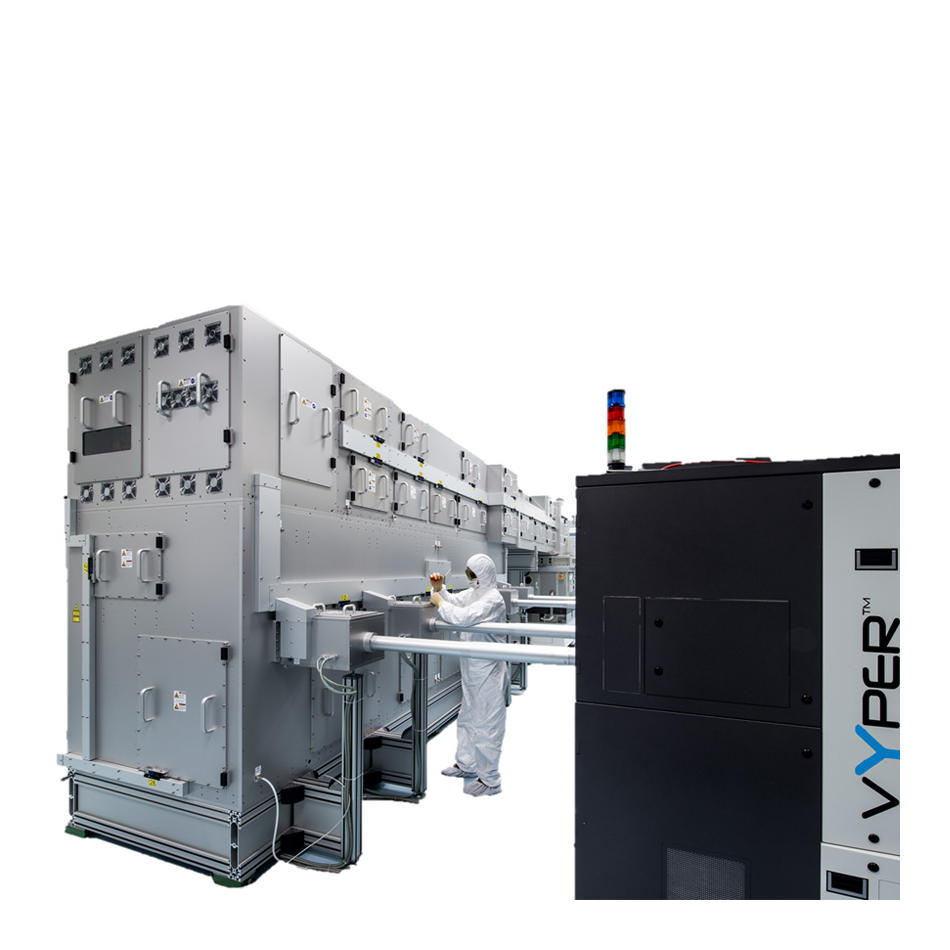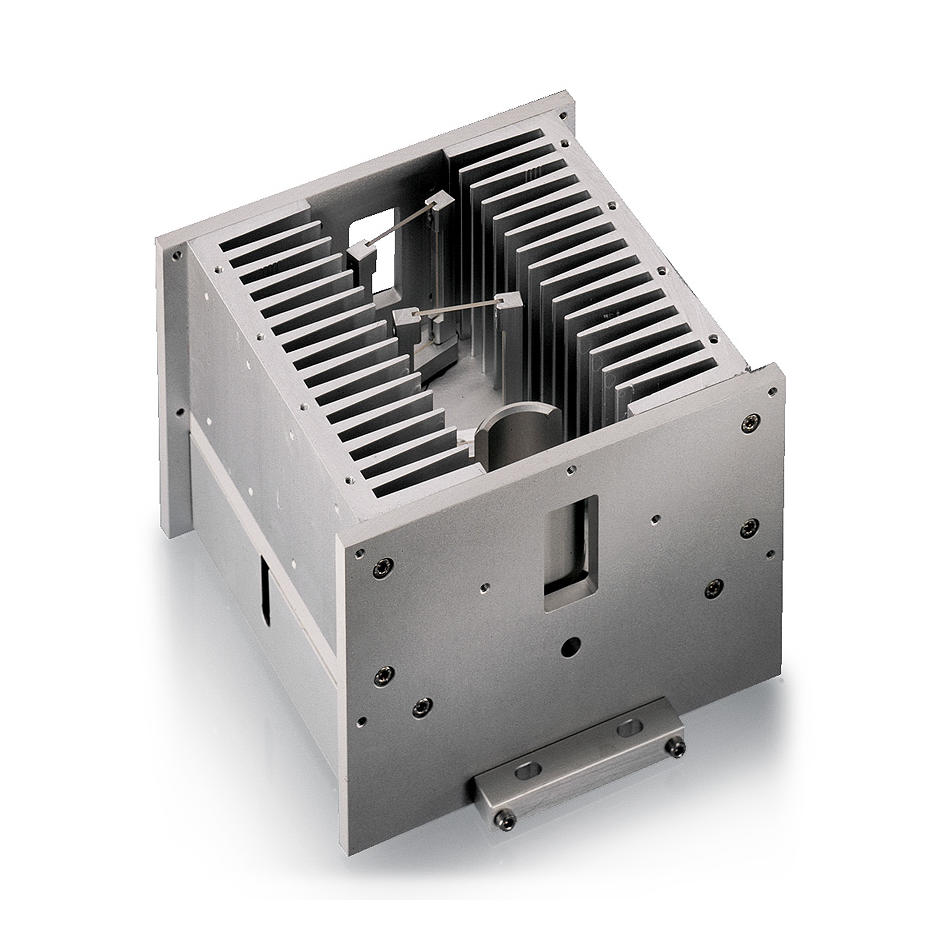A SOLID ADVANCE IN OLED DISPLAY PRODUCTION
The Coherent PYTHON offers breakthrough solid-state laser technology that significantly lowers costs for critical fabrication process.
April 27, 2023 by Coherent
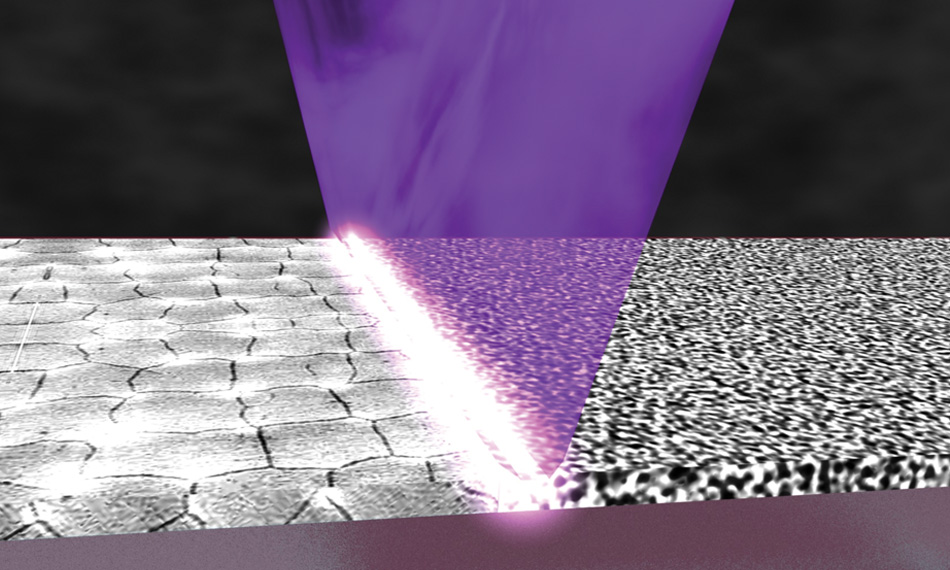
Excimer lasers have been a key enabling technology in flat panel display production. They produce high-energy pulses of ultraviolet (UV) light with very low pulse-to-pulse energy variation and a very homogenous beam intensity profile.
These unique properties enable excimer laser annealing (ELA) with Coherent LineBeam Systems based on our VYPER excimer lasers. Annealing the silicon layers on the glass substrate is critical in producing smartphone and tablet displays. ELA is the process of record in OLED flat panel display production, the standard that the industry has organized itself on.
But the unique UV pulse characteristics of excimer lasers come with uptime and cost-of-ownership realities. The excimer laser tubes have a limited lifetime; they must be replaced regularly in a flat panel display production line operating at capacity. In addition, some optical windows need to be replaced regularly due to UV-light-induced degradation.
Downtime is costly in a display production line, and maintenance cycles add to the expense of consumable replacement parts.
But there hasn’t been any lower cost laser technology that could produce the high-energy UV pulses required for ELA. Until now.
The PYTHON is conceived
The program to develop a diode-pumped, solid-state (DPSS) laser for ELA began in earnest at Coherent in 2019 as part of a continuous innovation cycle that drives technology forward. “Our goal was to create a lower cost-of-ownership laser with essentially identical output characteristics to our VYPER excimer laser, currently the source for all production ELA equipment worldwide,” notes Dr. Norman Hodgson, Coherent Corp. Chief Technology Officer for the Laser Segment. “This would allow us to integrate it into our current LineBeam systems and enable our customers to use the annealing system with little or no adjustment to their process.”
“Of course, Coherent already had tremendous experience and expertise in designing and producing high-reliability solid-state lasers. The problem is that almost nothing done previously applied for creating a laser that matched the extreme requirements of ELA. We had to start from the ground up and invent new technology.”
Ultraviolet DPSS lasers are usually designed to have good beam quality (M²<1.3) and pulse energies of less than one millijoule. This allows them to be focused down to a very small spot size and makes them an ideal source for micromachining. Sometimes, when much higher power is required, the laser might be operated multimode, with M² as high as 25 and pulse energies of up to 40 millijoules.
But the design goal for our DPSS VYPER replacement – called the PYTHON – was totally different from that. We needed a much higher M² and a pulse energy of 1 Joule to duplicate the beam characteristics of the VYPER.
Design innovations
The challenge of creating a solid-state laser with the unique output characteristics required for ELA primarily fell into three different areas.
The first involved the nonlinear crystals used to convert the original infrared output of the laser crystal into the UV. The physical size of the PYTHON crystals and the amount of laser power they handle are in a very different regime than anything preceding them. Even mathematically modeling the conversion process on this scale required developing new methods.
Manufacturing these large crystals, especially at the quality level required to handle the high laser powers involved, was also a tremendous challenge. Coherent grows and fabricates these crystals at our own Advanced Crystals Group. Possessing this capability internally was critical to developing crystals having the required quality along with maintaining a reliable supply as we move into production.
Developing coatings for all the optics represented another leapfrog moment. These must handle the extremely high laser fluences involved without being damaged.
While high laser damage threshold coatings have been around for many decades, this application represented a unique set of requirements. Specifically, this was the combination of beam size, pulse energy, and continuous exposure conditions (since the systems are operated virtually 24/7).
“We had to develop novel coating designs and then do several design iterations based on lifecycle test results and analysis of the coatings and components themselves. This was because we’re operating so far outside of the normal envelope of performance that nothing we knew before worked well enough,” notes Hodgson.
The final major innovation area was the technology used for q-switching the laser. This involves placing a modulator inside the laser resonator to produce high-energy pulses with pulse widths in the tens of nanoseconds. This is an extremely common technique and is used in many Coherent DPSS lasers.
But, again, the laser power and beam size in the PYTHON rendered the traditional approach useless. So, the Coherent team developed a new, proprietary pulsing technology for the PYTHON.
A multi-national team takes shape
All this innovation took place rapidly, thanks to a multi-disciplined engineering team. It comprised technology experts in DPSS laser design, pump diode architectures, frequency conversion techniques, crystal growth, and coating methods.
As a result of their efforts, the first breadboard of the laser was operational just six months after the program kickoff. Two prototype laser systems with the desired 600 W output power were completed about one year later. These lasers were then integrated into a LineBeam tool to perform annealing tests. When these proved successful, we started designing and testing the final product. This was all completed in about another 1½ years.
“The design of PYTHON has been the most challenging project of my career because virtually every laser component had to be custom developed for it,” states Hodgson. “And I can’t imagine we could have achieved this without being vertically integrated within Coherent. We needed to advance the technology for frequency conversion, q-switching, dielectric coatings, and crystal growth. We could only accomplish this because we have top-level engineering experts to develop these technologies and manufacture all these products in-house. This enables us to achieve the required performance, quality, and control level.”
PYTHON now offers an alternative to ELA that delivers a 50% lower cost-of-ownership and even improves annealing results. Learn more about PYTHON.
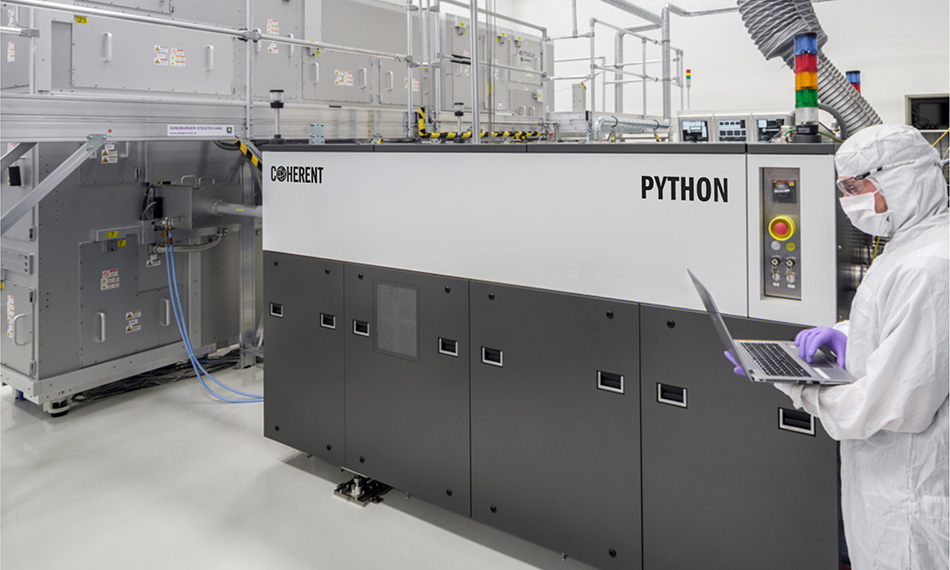
A PYTHON laser being installed in a LineBeam system to run annealing tests at Coherent in Göttingen, Germany.
